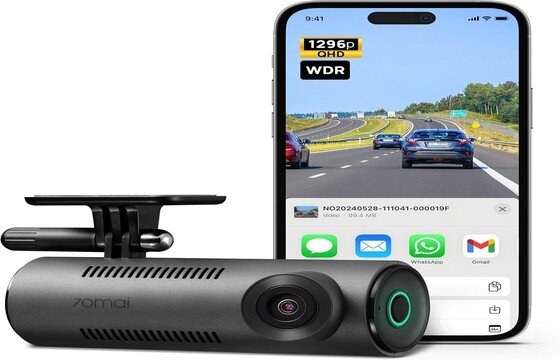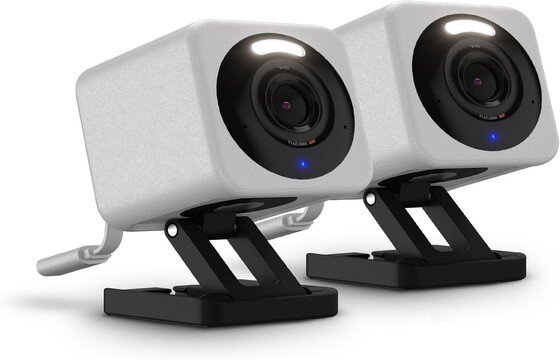Blurry Camera Footage? 3 Troubleshooting Steps + Cleaning Tips

1. Troubleshoot Technical Glitches First: Rule Out Settings or Connection Issues
Check Focus and Lens Alignment
Many blurriness issues stem from misaligned lenses. For fixed-lens cameras, gently rotate the lens ring (if adjustable) while previewing footage on your phone app until details sharpen. For motorized focus models, use the app’s “auto-focus” feature—some brands (e.g., Arlo, Ring) let you tap the screen to focus on specific areas (e.g., a doorknob or a valuable item).
Case example: A user reported blurry morning footage, only to find the lens had shifted after nighttime temperature changes. Realigning it via the app restored clarity instantly.
Test Network Bandwidth and Storage
A spotty Wi-Fi signal might make your video look pixelated or blurry, and this is even more noticeable with 4K cameras. Take a look at your router connection: try moving the camera nearer to the router, or if your devices support it, switch to 5GHz Wi-Fi to cut down on interference. If you’re using cloud storage, slow internet speeds could make the camera drop the video quality—try using local storage with an SD card to see if the footage gets better.
Quick tip: Most camera apps let you run a speed test on the network the camera’s using. For 1080p video, you’ll want at least 2Mbps upload speed, and 5Mbps or more for 4K.
Update the Firmware and App Settings
Old software is a common culprit for performance issues. Open your camera’s app, go to “Settings,” and install the newest firmware. Also, check the resolution settings—some cameras automatically switch to 720p when the network is bad. If your internet can handle it, set it to 1080p or 4K manually.
2. Inspect for Physical Obstructions: Clear Blockages That Hinder Visibility
Remove Dust, Smudges, and Debris
Dust buildup on the lens is the #1 cause of blurriness, especially in kitchens (grease) or humid rooms (condensation). Even a fingerprint can distort details. Use these tools for safe cleaning:
· Microfiber cloth: Wipe the lens in gentle circular motions—avoid paper towels, which scratch glass.
· Lens cleaning solution: Apply a drop to the cloth (never directly on the lens) for stubborn smudges or grease.
· Compressed air: Blow away dust in hard-to-reach crevices (e.g., around the lens frame) without touching the glass.
Check for Glare and Reflection Issues
Windows, mirrors, or bright lights can create glare that washes out footage. Reposition the camera to avoid direct sunlight or indoor light sources (e.g., lamps) hitting the lens. For cameras near windows, use anti-glare film on the glass, or angle the lens slightly downward to minimize reflection.
Examine for Physical Damage
If the lens is cracked or scratched, blurriness is permanent—but minor damage (e.g., a small scratch) can sometimes be masked by adjusting the focus. Check the camera housing for loose parts: a wobbly mount can cause constant motion blur, especially in windy areas (e.g., near open windows). Tighten screws or replace the mount if needed.
3. Prevent Future Blurriness: Maintenance Habits for Long-Term Clarity
Schedule Regular Cleaning
Set a calendar reminder to clean the lens every 2–4 weeks, or more often in high-dust areas (e.g., near vents) or kitchens. Keep a microfiber cloth and lens solution near the camera for quick touch-ups.
Protect Cameras in High-Moisture Areas
Bathrooms or laundry rooms can cause condensation on the lens. Choose weather-resistant cameras (IP65-rated or higher) for these spaces, or use a waterproof cover. Wipe the lens dry after steam exposure (e.g., post-shower).
Invest in Protective Accessories
A lens hood can reduce glare and block dust, while a tamper-proof housing prevents accidental bumps. For pet owners, consider a protective case to shield the lens from scratches (e.g., if cats rub against the camera).

Final Takeaway
- Blurry security camera footage is rarely a sign of a broken device—more often, it’s a fixable issue with focus, cleaning, or connectivity.
- By following these steps, you’ll ensure your camera captures sharp, detailed footage when you need it most.
- Regular maintenance not only saves you from unnecessary replacements but also keeps your home monitoring reliable, whether you’re tracking a package delivery or investigating a strange noise.

